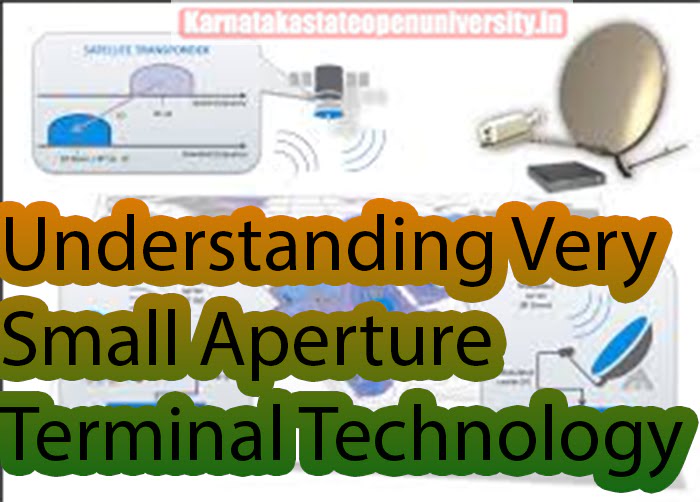Understanding Very Small Aperture Terminal: If you’ve ever wondered how satellite communication works or how remote areas can stay connected, then you’ve come to the right place. In this blog post, we will demystify Very Small Aperture Terminal (VSAT) technology and explain how it enables high-speed internet access, voice communication, and video conferencing in even the most remote locations.
Whether you’re a tech enthusiast or simply curious about how modern communication systems work, this guide will provide you with a comprehensive understanding of VSAT technology and its applications. So grab your satellite dish and let’s embark on this exciting journey.
Understanding Very Small Aperture Terminal
Very Small Aperture Terminal (VSAT) is a satellite communication system that allows for two-way communication between a small earth station and a geostationary satellite. This technology is commonly used for internet connectivity, voice and video communication, and data transfer in areas where traditional terrestrial communication infrastructure is either limited or unavailable.
VSAT systems are popular in remote locations like rural communities, oil rigs, and ships at sea. They offer reliable connectivity even in harsh weather conditions and can be customized to cater to specific needs. Moreover, VSAT networks can also be used for disaster response and recovery efforts as they can quickly establish a connection when other means of communication are compromised.

Understanding Very Small Aperture Terminal Details
| Article Name | Very Small Aperture Terminal (VSAT) technology |
| Category | Tech |
| Official Website | Click Here |
See this: Moto G84 Price in India
How VSAT Works
VSAT technology is comprised of three primary elements: a satellite positioned in space, a ground-based hub station, and remote terminals or VSATs. The satellite functions as an intermediary station, receiving and transmitting signals between the hub station and the remote terminals.
Hub Station
The hub station serves as the primary control station responsible for managing communication between the satellite and remote terminals. It is comprised of a sizable dish antenna, uplink and downlink transmitters, as well as network equipment designed to handle data traffic.
Remote Terminals (VSATs)
The user’s location is where the remote terminals, also referred to as VSATs, are installed. These VSATs are comprised of a small dish antenna, a transceiver (which includes a transmitter and receiver), and a modem. Typically, the dish antenna has a diameter of approximately 1-2 meters and is utilized for transmitting and receiving signals to and from the satellite.
Advantages of VSAT
There are multiple benefits that VSAT technology provides in comparison to conventional communication systems.
- Wide Coverage: VSATs have the capability to offer connectivity in areas that are remote and rural, where there is a lack of terrestrial infrastructure.
- Quick Deployment: VSAT systems are capable of being rapidly installed, making them well-suited for emergency communication and temporary setups.
- Scalability: Businesses with increasing communication requirements can conveniently expand their VSAT networks by adding more VSATs.
- Reliable Connectivity: VSAT systems have a lower susceptibility to disruptions caused by natural disasters or physical damage to communication infrastructure.
Watch Here: Honor 8X Price In India
Applications of VSAT
VSAT technology finds application in a wide range of industries and sectors.
- Telecommunications: VSATs are employed for the purpose of delivering internet connectivity, voice communication, and video conferencing services.
- Banking and Finance: VSATs ensure that banking transactions and ATM networks can communicate securely and reliably.
- Oil and Gas: VSATs play a crucial role in the oil and gas industry by facilitating offshore communication, remote monitoring, and video surveillance.
- Education and Healthcare: VSATs are utilized to offer distance learning and telemedicine services in regions that are geographically isolated.
Conclusion
VSAT technology plays a vital role in connecting remote and underserved areas, effectively bridging the communication gap. Its extensive coverage, rapid deployment, and scalability make it an excellent solution for various industries and sectors. As satellite technology progresses, VSAT systems continually advance, providing faster speeds, increased bandwidth, and enhanced reliability.
Understanding Very Small Aperture Terminal FAQ’S
What is very small aperture technology?
A small earth station, known as a very small aperture terminal (VSAT), is utilized for transmitting and receiving data, voice, and video signals via a satellite communication network. However, it does not include broadcast television.
What is an example of a VSAT?
An everyday example of VSAT terminals are the dish antennas used for D2H (Direct to Home) satellite television broadcast.
What are the two types of VSAT?
The dedicated services and the shared ones.
What is VSAT in physics?
One such intriguing concept is Very Small Angle Scattering (VSAT), a technique that plays a crucial role in understanding the structure and properties of various materials at the atomic and molecular level.
Related Post: